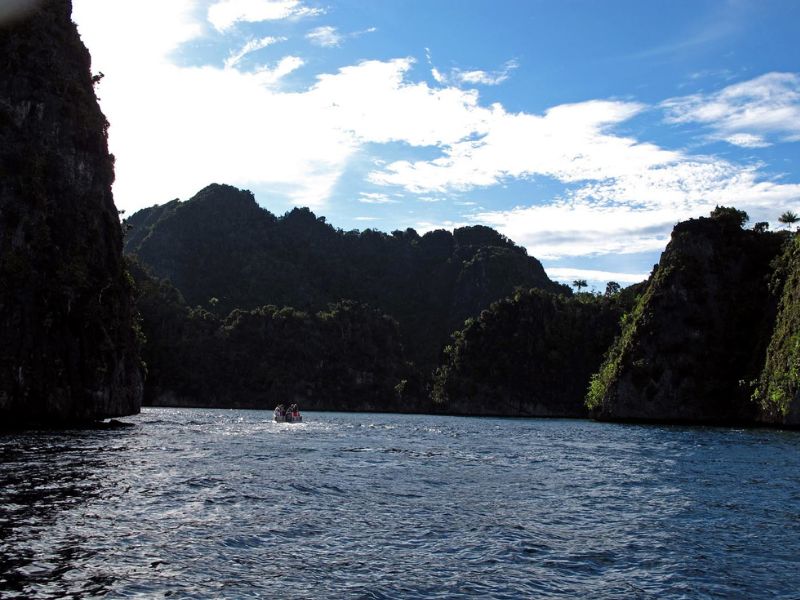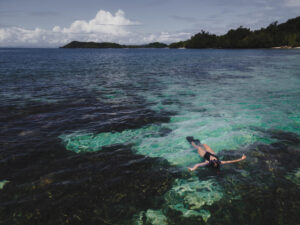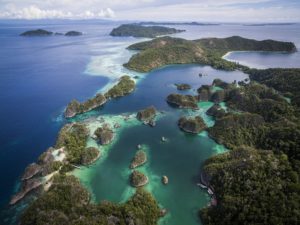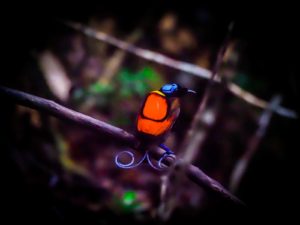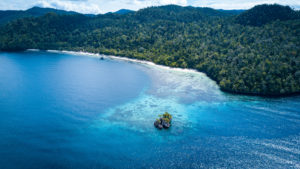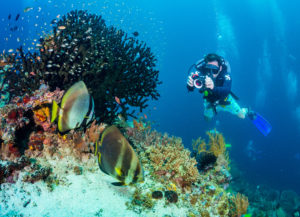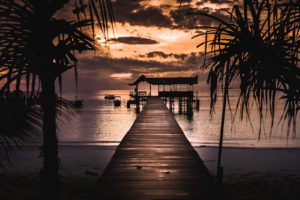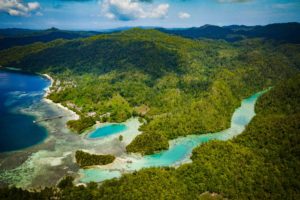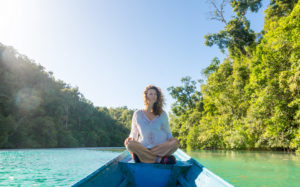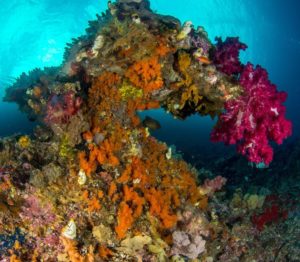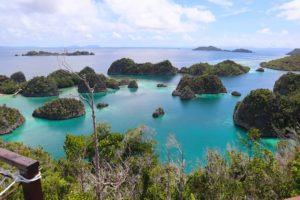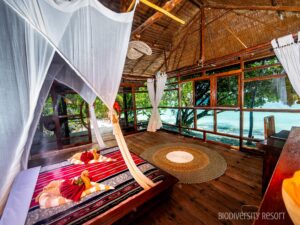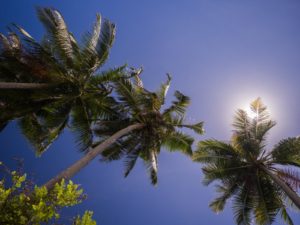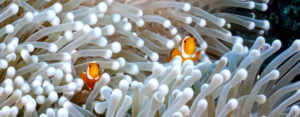Scuba diving in Raja Ampat is always an unforgettable experience but we have heard many times how difficult it is to understand the areas that can be covered with a land based operation or even by a liveaboard.
In order to avoid disappointment and make the most of it, we recommend that you get information from expert professionals, like the ones we have at Raja Ampat Biodiversity Resort to dive in the best places. In this post we will tell you what we think are the best places to scuba dive in Raja Ampat and in the world. Few Raja Ampat dives sites are in the top ten of best dive sites of the world!
Raja Ampat, an archipelago comprising over 1,500 small islands in Indonesia, is renowned as one of the premier scuba diving destinations in the world. Its name, which translates to “Four Kings,” refers to the four main islands of Misool, Salawati, Batanta, and Waigeo. Beneath the crystal-clear waters of Raja Ampat lies a vibrant and diverse marine ecosystem, teeming with an abundance of marine life and stunning coral reefs. In this comprehensive guide, we will delve into the best places to dive in Raja Ampat, each offering a unique and unforgettable underwater experience.
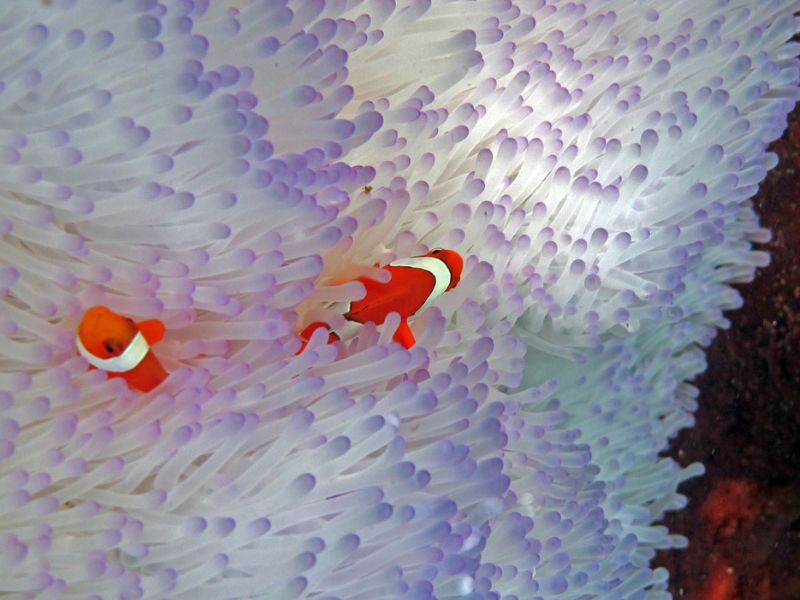
THE BEST FIVE ISLANDS TO DO SCUBA DIVING IN RAJA AMPAT
As we mentioned, Raja Ampat is a big area, and it is impossible to cover the whole area with a land base operation, and even with a liveaboard. We can divide the area by North, central and south Raja Ampat.
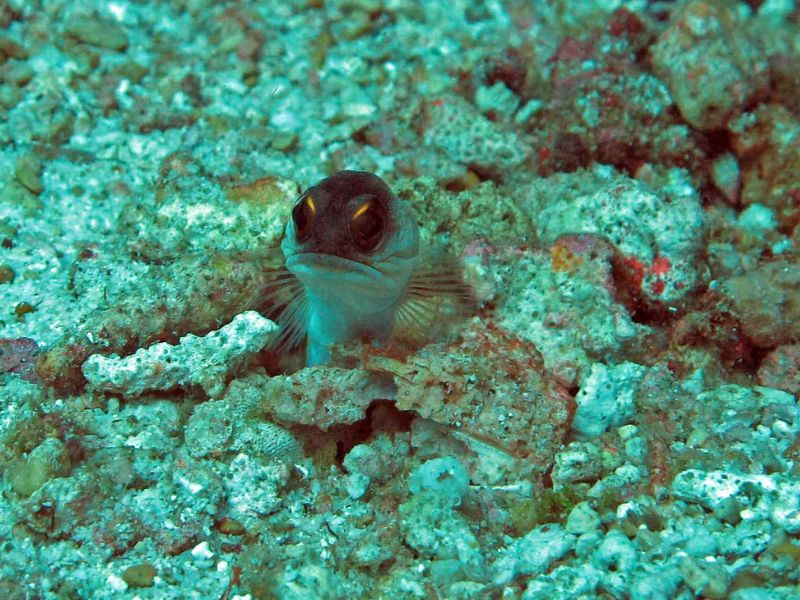
Northern Raja Ampat
1. Wayag
For those seeking adventure and unparalleled natural beauty, Wayag offers a diving experience like no other. Located in the northern part of Raja Ampat, Wayag is famous for its stunning karst limestone islands, turquoise lagoons, and secluded bays. Beneath the surface, divers can explore vibrant coral gardens, underwater pinnacles, and breathtaking drop-offs. Dive sites such as Cathedral, The Passage, and Twin Rocks are known for their dramatic underwater topography and encounters with larger marine species, including reef sharks, manta rays, and even occasional sightings of whales and dolphins.The landscape is very unique, is the bigger version of Fam islands (explained below), however top dive sites are limited in this area.Some operators offer day trips to this area, we don´t do it, because we believe is too far for a day trip, we recommend to spend at least one night here. Is around 5 hours boat ride from Biodiversity resort.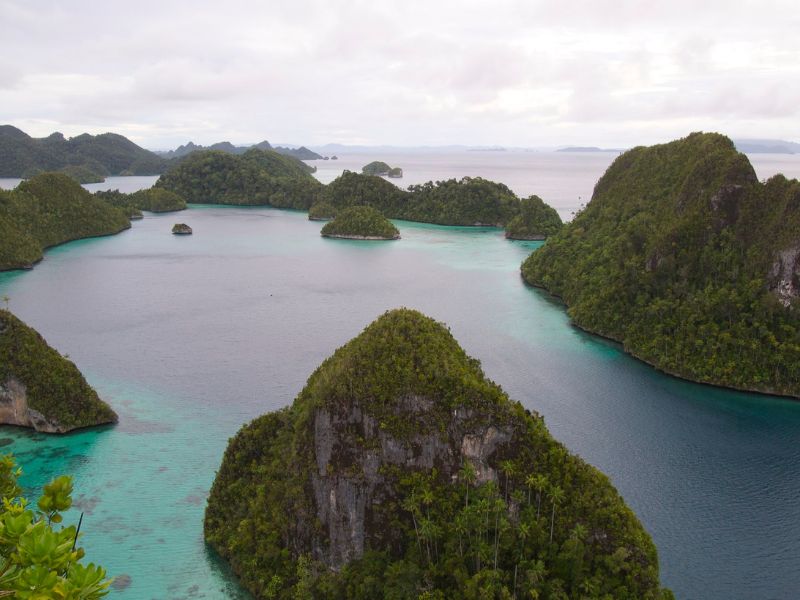
Central Raja Ampat
2. Dampier Strait
Situated between the islands of Waigeo and Batanta, Dampier Strait is a hotspot for marine biodiversity. Strong currents flowing through the strait bring nutrient-rich waters, fueling the growth of vibrant coral reefs and attracting an array of marine creatures. Divers flock to iconic sites such as Cape Kri, Sardine Reef, and Mioskon to witness the spectacle of schooling fish, including giant trevallies, snappers, and fusiliers. The area is also renowned for its impressive coral formations, with delicate sea fans, massive gorgonian fans, and intricate hard corals adorning the underwater landscape.Without a doubt, one of the places that you cannot miss when you organize your scuba diving trip in Raja Ampat.
Most of the land based resorts are located in this area, is also where most of the very famous dive sites of Raja Ampat are located, so this is the best place to start!
3. Fam Islands
The Fam Islands, encompassing Fam, Penemu, and Uranie, are renowned for their stunning scenery above and below the waterline. Divers are treated to a kaleidoscope of colors as they explore the crystal-clear waters surrounding these picturesque islands. Dive sites like Melissa’s Garden, My Reef, and Penemu Wall offer opportunities to encounter an abundance of marine life, from tiny critters hiding among the coral to larger pelagic species cruising in the blue. Current-swept channels and steep walls provide exhilarating drift dives, while shallow reefs are perfect for leisurely exploration and underwater photography.
The dive sites in this are are very special, is 1,5 hours from the resort, and is one of our very popular excursions, we organise it as a day trip, with two dives, picnic and visit to the stunning viewpoint.
4. Batanta Island
Batanta Island, characterized by lush rainforests and rugged coastlines, offers a more secluded diving experience away from the crowds. Divers can explore pristine coral reefs, vibrant bommies, and rocky outcrops teeming with life. Sites like Algae Patch, Black Beauty, and Batu Hitam are known for their incredible macro photography opportunities, with rare critters such as ghost pipefish, blue-ringed octopuses, and flamboyant cuttlefish hiding among the coral. Batanta’s calm and sheltered waters also make it an ideal destination for night dives, where nocturnal creatures come out to play under the cover of darkness.
We are able to organise excursions to Batanta, for those critter lovers, however the dive sites of this area are not as popular as the ones in Dampier Strait.
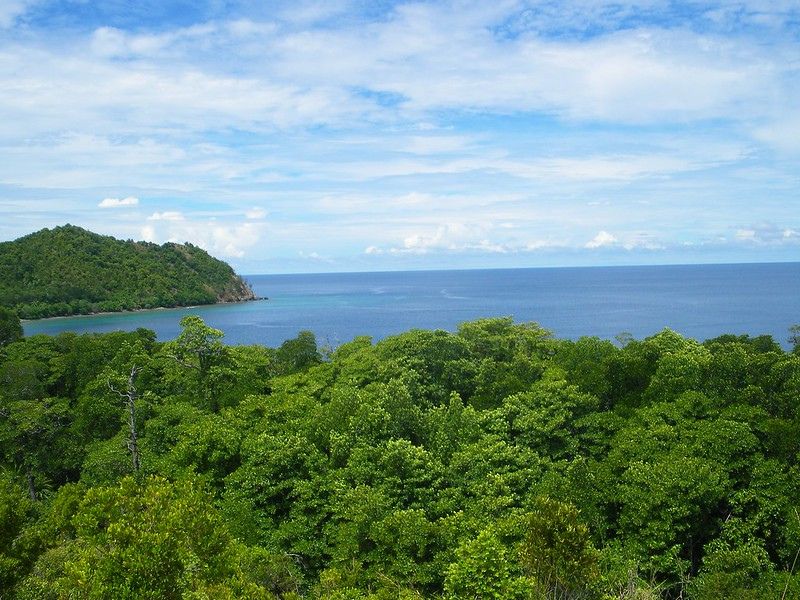
Southern Raja Ampat
5. Misool
Located in the southern part of Raja Ampat, Misool is a paradise for underwater and well knows for best sofl corals for scuba diving in Raja Ampat. The region boasts some of the most pristine coral reefs in the world, characterized by breathtaking underwater landscapes and an incredible variety of marine species. Diving in Misool offers encounters with colorful coral gardens, towering sea mounts, and mesmerizing underwater caves. Sites like Boo Windows, Magic Mountain, and Fiabacet are must-visit destinations, where divers can marvel at the sheer diversity of marine life, including pygmy seahorses, nudibranchs, and schools of barracudas and jacks.
This are is South from Sorong, most of the land based resorts are located in Dampier Strait and therefore too far from Misool.
Raja Ampat stands as a testament to the unparalleled beauty and biodiversity of the underwater world. From the vibrant coral reefs of Misool to the dramatic landscapes of Wayag and the secluded dive sites of Batanta, each corner of this archipelago offers a unique and unforgettable diving experience. Whether you’re a seasoned diver or a novice enthusiast, scuba diving in Raja Ampat promises endless opportunities for exploration and discovery beneath the waves. So pack your dive gear, immerse yourself in the wonders of the marine realm, and prepare to be mesmerized by the underwater marvels of Raja Ampat.
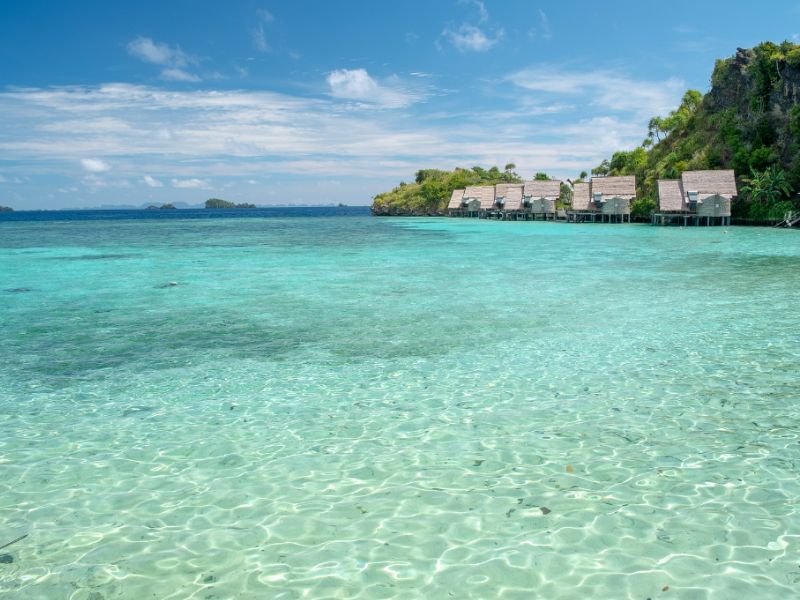
Two important questions about scuba diving in Raja Ampat
When to dive Raja Ampat?
When’s the best time of year?
Raja Ampat is all year destination. High season is considered from October to April, because the sea is calm. Manta Ray arrive around November and leave in April. May and June have better visibility, since there is no plankton.
Please note that August is considered to be a windy month, therefor the boat activities can be limited, depending on weather & sea conditions. This does not happened every day.
How much time should I spend in Raja Ampat?
We recommend a stay of 7 nights to be able to see the highlights of the area, 10 days if you want to see most of it, and a minimum of 5 is you can´t get more days off!
